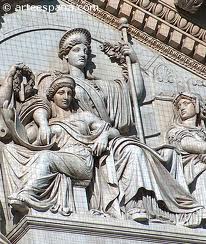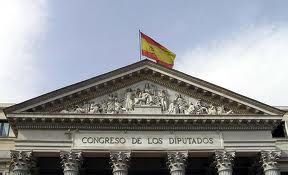Neoclassicism: Ponciano Ponzano
Ponciano Ponzano was a Spanish sculptor who worked mainly in the Neoclassical style of sculpture. Today he is recognised as one of the most prestigious sculptors of Spain from the 19th Century.
Ponciano Ponzano (1813-1877)
Ponciano Ponzano was born in Zaragoza in 1813. His father was a porter at the 'Real Academia de Nobles y Bellas Artes de San Luis' (Royal Academy of Noble and Fine Arts of San Luis) in Zaragoza, which clearly had an impact on Ponciano as a child. Ponciano Ponzano was therefore in contact with art from a young age and he showed great skill in drawing and painting as a child.

At the age of sixteen, Ponciano Ponzano went to study in Madrid at the 'Real Academia de Bellas Artes de San Fernando' (Royal Academy of Fine Arts of San Fernando), where he was taught by José Álvarez Cubero, another famous Spanish sculptor. Under Cubero's teaching, Ponzano learnt the Neoclassical style of sculpture.
Following his time studying in Spain, Ponciano then received a grant which enabled him to complete his studies in Rome, Italy. In Rome, Ponzano was taught by the Neoclassical sculptorBertel Thorvaldsen. Ponciano Ponzano completed several sculptures during his stay in Italy, which depicted dramatic scenes. The most famous of these was 'Ulises reconocido por Euricles' (Ulysees recognised by Eurycles). This piece was so successful that when he returned to Spain in 1838, the 'Real Academia de Bellas Artes de San Fernando' made Ponzano an Academic of Merit straight away. Later, in 1871, Ponciano Ponzano became a teacher for the Academy.
Ponciano Ponzano became the official Sculptor for the Royal Court of Queen Isabel II of Spain. For the Royal Court, Ponzano completed many busts, reliefs, statues and monuments, all in the Neoclassical style. However, he also completed other works for other members of the upper Spanish classes. For the Count of Toreno, Ponciano Ponzano produced his work 'El diluvio universal' (The Universal Flood), in which a naked man is depicted carrying his mother on his shoulders so as to protect her from the rising waters below.

Ponciano Ponzano's most famous work was the front facade of the 'Palacio de las Cortes' (Palace of the Courts), which today is the 'Congreso de los Diputados' (Congress of Deputies). However, in order to be able to design and sculpt this facade, Ponzano had to win a competition, which he did so, beating other famous Spanish sculptors like Medina, Piquer and Pérez del Valle. The facade depicted the figures of Spain, Honour, Justice and Peace which were to represent the Spanish Constitution, Sciences, Fine Arts, Industry and Commerce.
Ponciano also sculpted the two realistic bronze lions that sit either side of the stairs into the building. The lions were originally meant to be sculpted in marble. However, curiously, Ponciano believed that this would be bad luck and so he decided to sculpt them in bronze. The bronze that was used for the lions came from melted down cannons that were used in a war in Africa in 1860. Unfortunately, Ponzano died just before the lion sculptures were completed.
Other noteworthy pieces of sculpture that Ponzano completed include the decoration above the doorway of the Church of Saint Jerome, a set of sculptures for the 'Panteón de los Infantes' at the Monastery of El Escorial, and some work for one of the many universities in Madrid.
Besides his many sculptures for architectural works, Ponciano Ponzano also produced some busts and torsos of local heroes. For example, Ponzano produced a bust of a local doctor, Doctor Lera, and a bust of José Madrazo, a Spanish painter.
Ponzano's work had a strong Neoclassical theme. However this also hindered him slightly as it was not an extremely creative style of sculpture. Neoclassicalism, while very prestigious, was out-of-fashion at the time. Furthermore, sculpture in Spain and across Europe was suffering from a lack of new ideas. Today however, we can appreciate Ponzano's works as being some of the most prestigious Spanish sculptures of this period.
